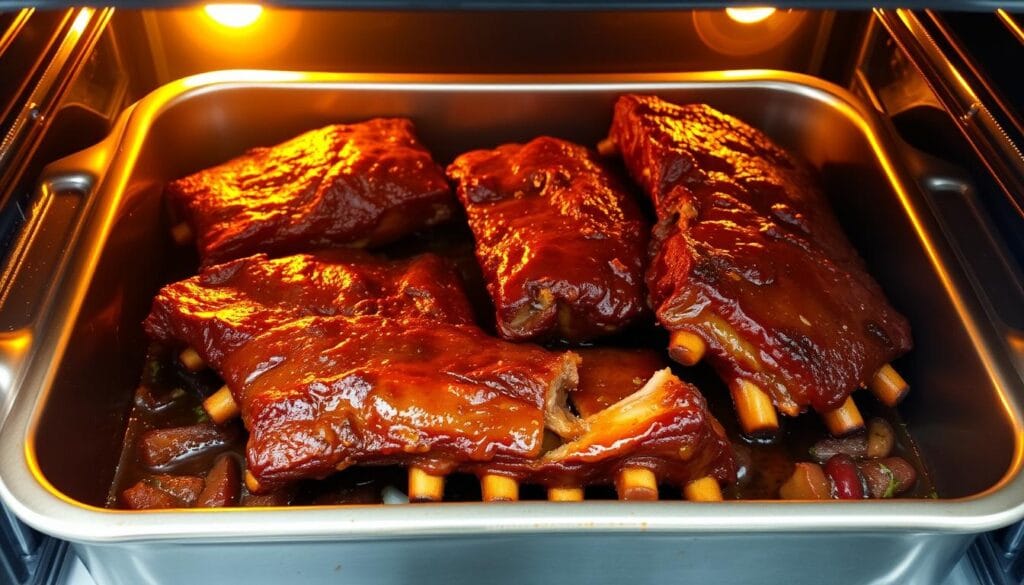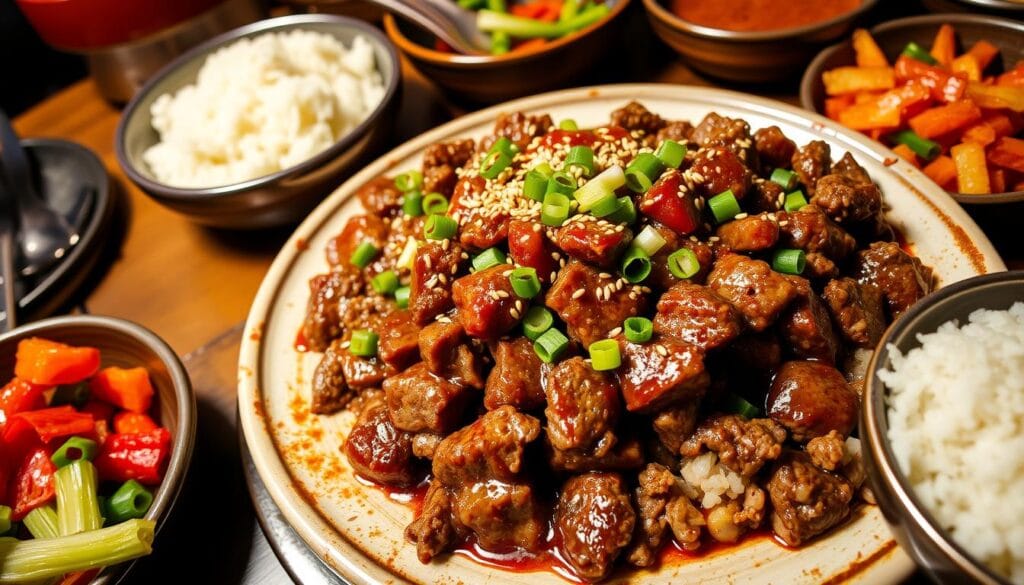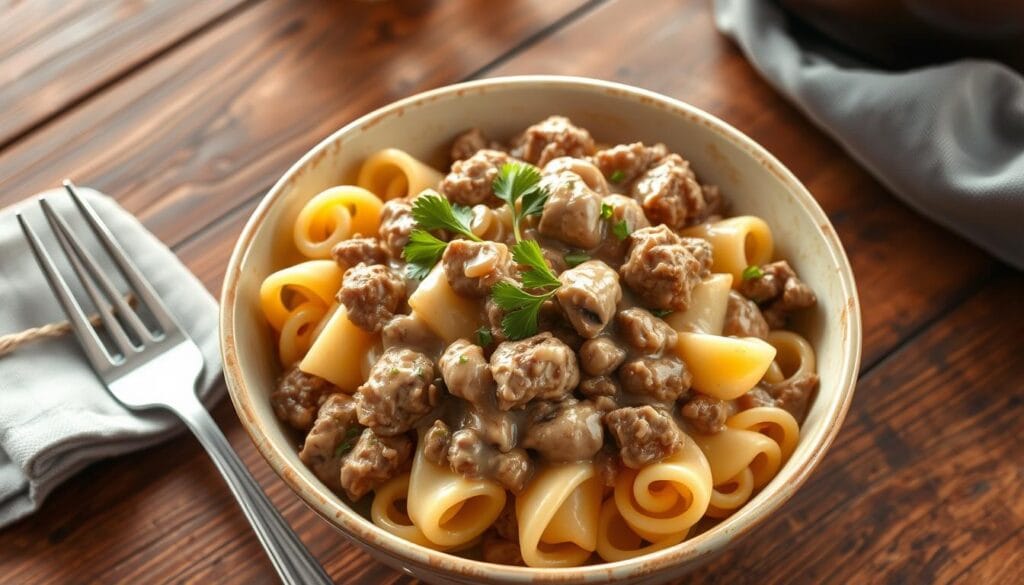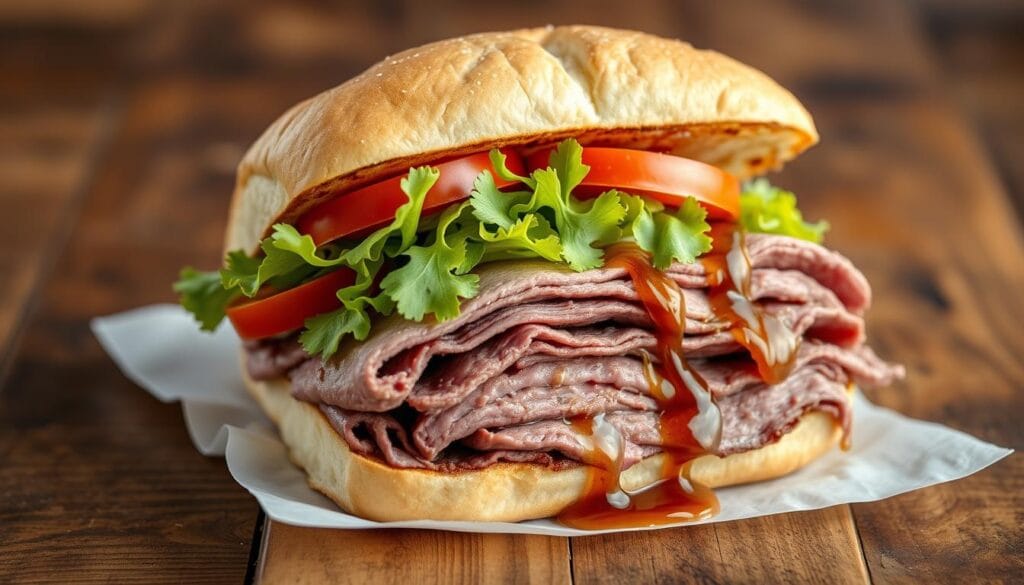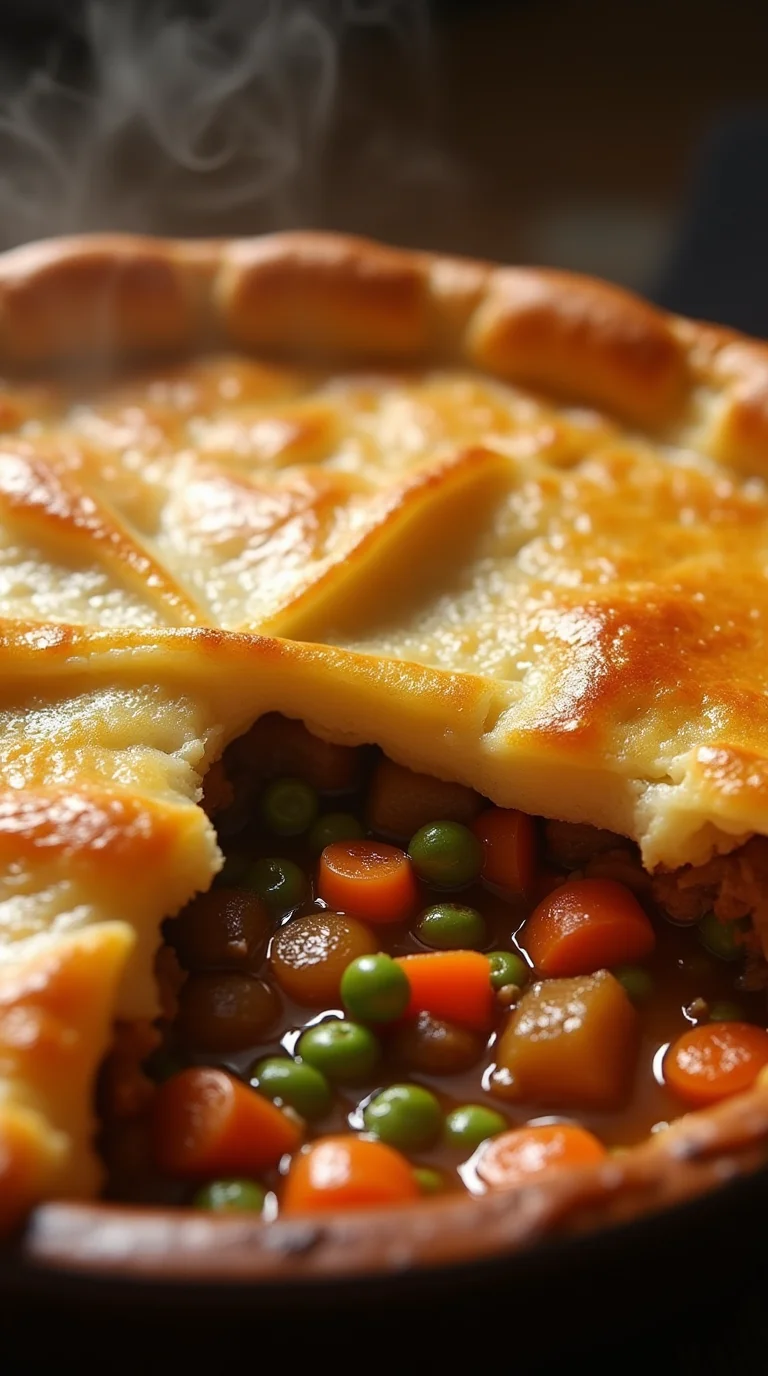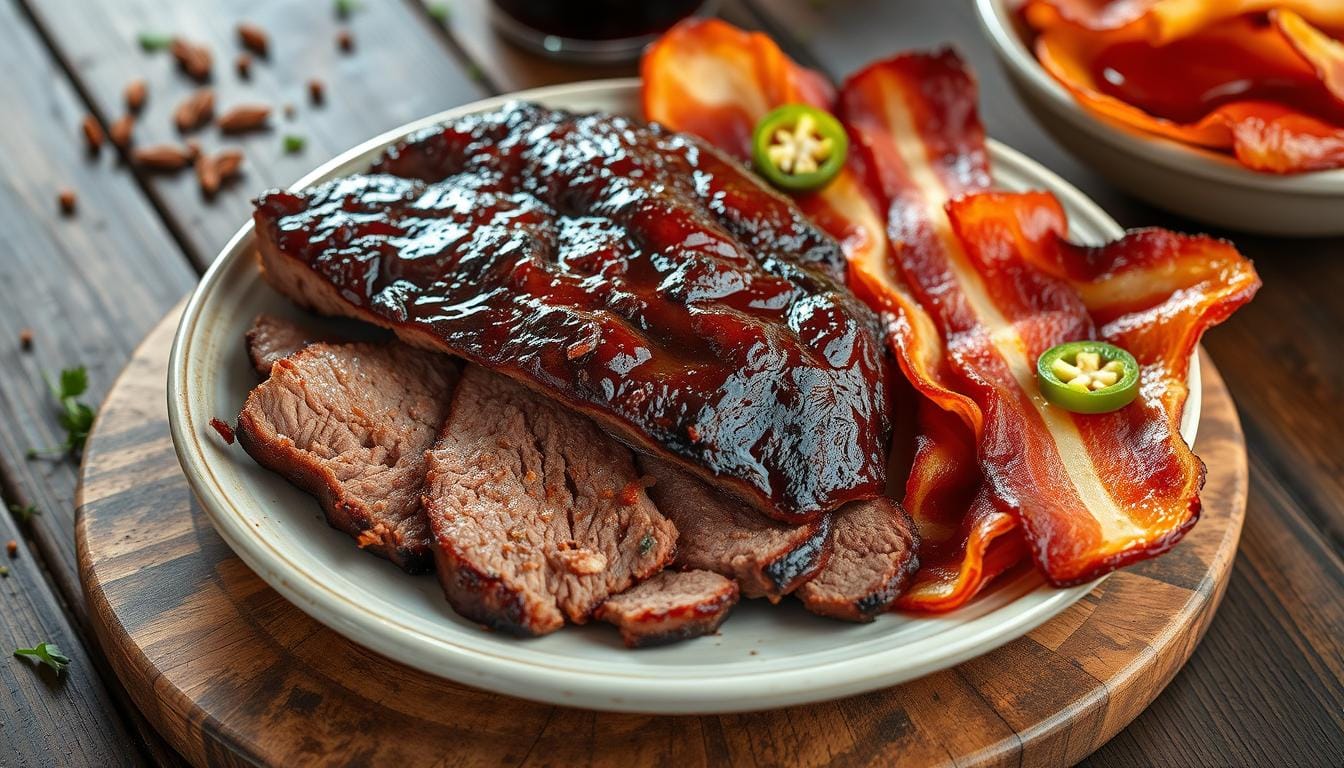Did you know that 68% of people who try the carnivore diet report significant improvement in energy levels within just two weeks? This fascinating dietary approach, focusing exclusively on animal products, has gained tremendous popularity for its potential health benefits and straightforward food preparation. If you’re exploring the carnivore diet but concerned about meal monotony, you’re in the right place. These carnivore diet recipes will transform your dining experience while keeping you firmly within the diet’s guidelines. From savory breakfast options to satisfying dinners, we’ve curated recipes that maximize flavor while maintaining the simplicity that makes the carnivore diet appealing.
Table of Contents
Perfectly Seared Ribeye Steak
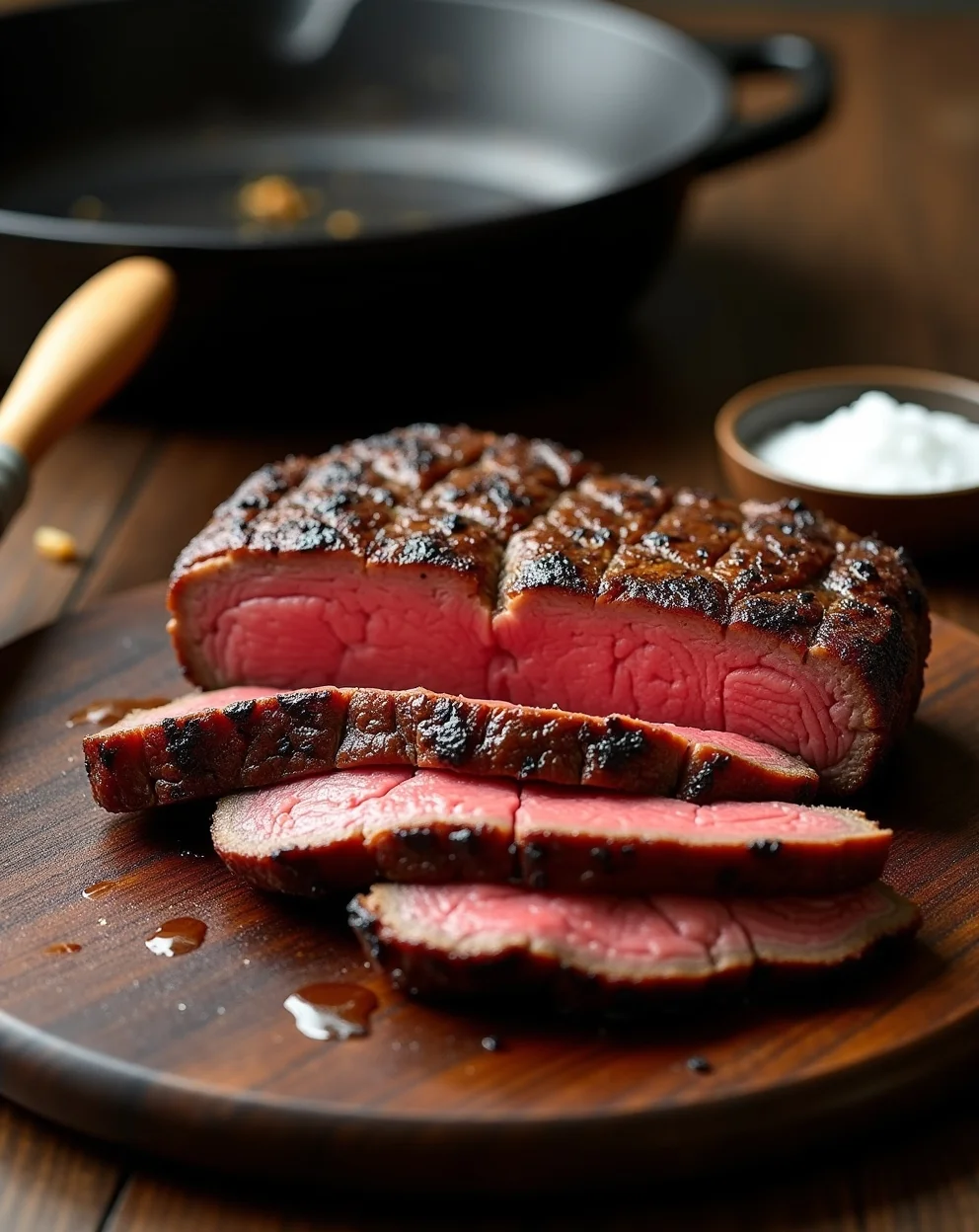
Ingredients
- 1 (16 oz) grass-fed ribeye steak, 1.5 inches thick
- 2 tablespoons beef tallow (substitute with butter if preferred)
- Sea salt to taste
- Optional: black pepper (omit for strict carnivore)
The marbling in ribeye creates a buttery texture and rich flavor profile that makes it the crown jewel of carnivore diet recipes. Select steaks with good marbling for the best results.
Timing
- Preparation time: 5 minutes
- Cooking time: 8 minutes
- Total time: 13 minutes (30% faster than most steak recipes while maximizing flavor development)
Step-by-Step Instructions
Step 1: Prepare the Steak
Remove the steak from the refrigerator 30-45 minutes before cooking to allow it to reach room temperature. This ensures even cooking throughout. Pat the steak dry with paper towels (moisture is the enemy of a perfect sear) and season generously with sea salt on both sides.
Step 2: Heat Your Cooking Surface
Heat a cast-iron skillet over high heat until it’s smoking hot. This typically takes 4-5 minutes. The ideal surface temperature is around 450°F (232°C) for the perfect Maillard reaction.
Step 3: Sear the Steak
Add beef tallow to the skillet and let it melt completely. Place the steak in the center and press down gently to ensure full contact with the hot surface. Sear for 3-4 minutes without moving it.
Step 4: Flip and Finish
Flip the steak only once and sear the other side for an additional 3-4 minutes for medium-rare. If you prefer your steak more done, add 1-2 minutes per side. For the final minute, you can tilt the pan and baste the steak with the rendered fat.
Step 5: Rest
Transfer the steak to a cutting board and let it rest for 5 minutes. This allows the juices to redistribute throughout the meat, resulting in a more flavorful and tender eating experience.
Nutritional Information
- Calories: 850
- Protein: 65g
- Fat: 65g
- Carbohydrates: 0g
- Iron: 20% of daily requirements
- Zinc: 50% of daily requirements
- B vitamins: Significant amounts of B3, B6, and B12
Bone Marrow Butter Toast-less Toast
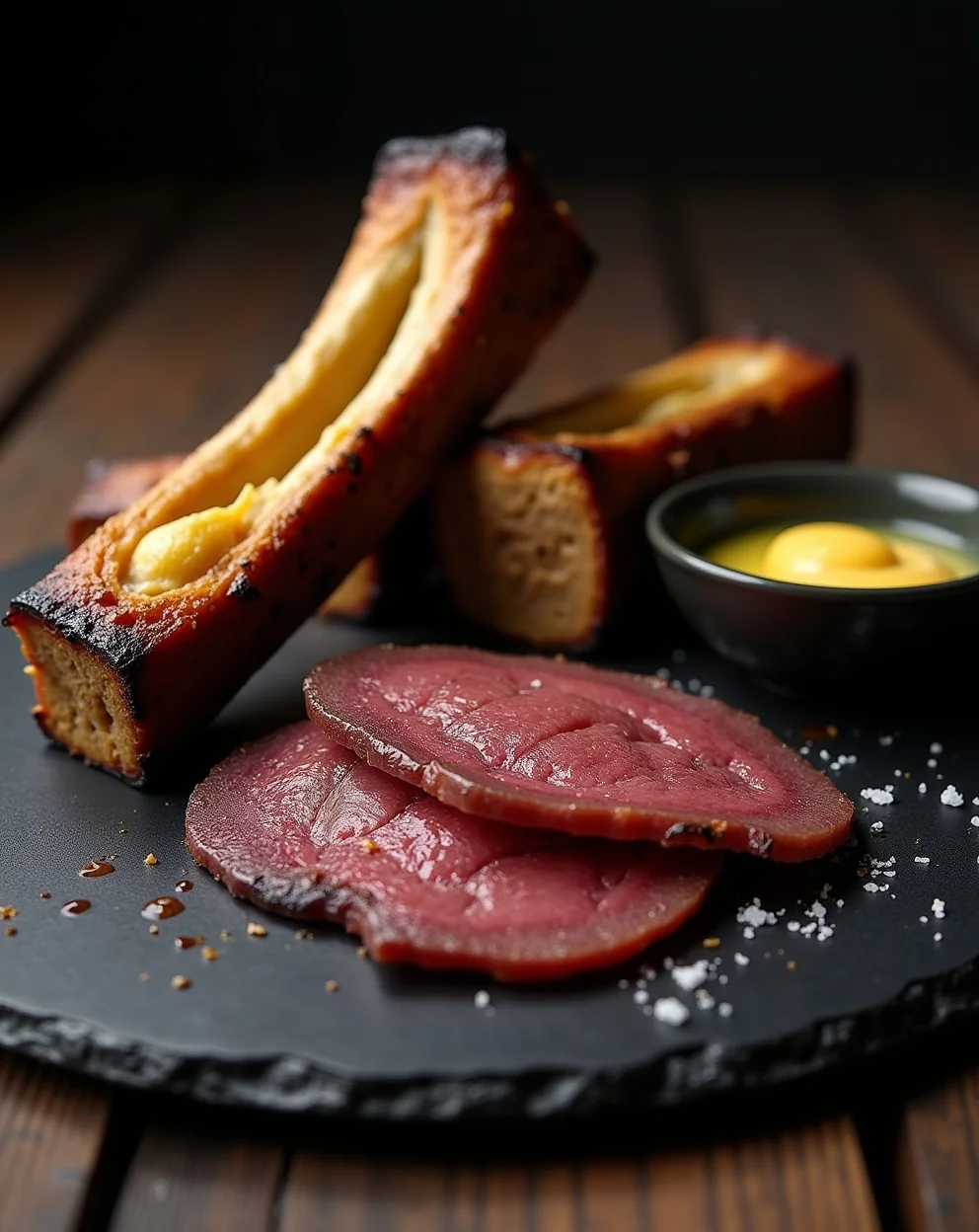
Ingredients
- 4 beef marrow bones (about 3-4 inches each)
- 4 thin slices of beef liver (¼ inch thick)
- 2 tablespoons tallow or butter
- Sea salt to taste
Bone marrow is often called “nature’s butter” due to its rich, creamy texture and is one of the most nutrient-dense components in carnivore diet recipes.
Timing
- Preparation time: 5 minutes
- Cooking time: 20 minutes
- Total time: 25 minutes
Step-by-Step Instructions
Step 1: Prepare the Bones
Preheat your oven to 425°F (220°C). Place marrow bones standing upright on a baking sheet lined with parchment paper.
Step 2: Roast the Marrow
Roast the bones for 15-20 minutes until the marrow is bubbling and just beginning to separate from the bone. Don’t overcook as marrow can easily melt away.
Step 3: Prepare the “Toast”
While the marrow roasts, heat a skillet over medium-high heat. Add tallow and sear the liver slices for about 2 minutes per side until firm but still slightly pink in the center.
Step 4: Assemble
Remove the marrow bones from the oven. Scoop the marrow out onto the liver slices while still hot. Sprinkle with sea salt and serve immediately.
Nutritional Information
- Calories: 420 per serving
- Protein: 28g
- Fat: 35g
- Carbohydrates: 0g
- Vitamin A: 800% of daily requirements (from liver)
- Iron: 35% of daily requirements
- Copper: 400% of daily requirements
Butter-Basted Lamb Chops
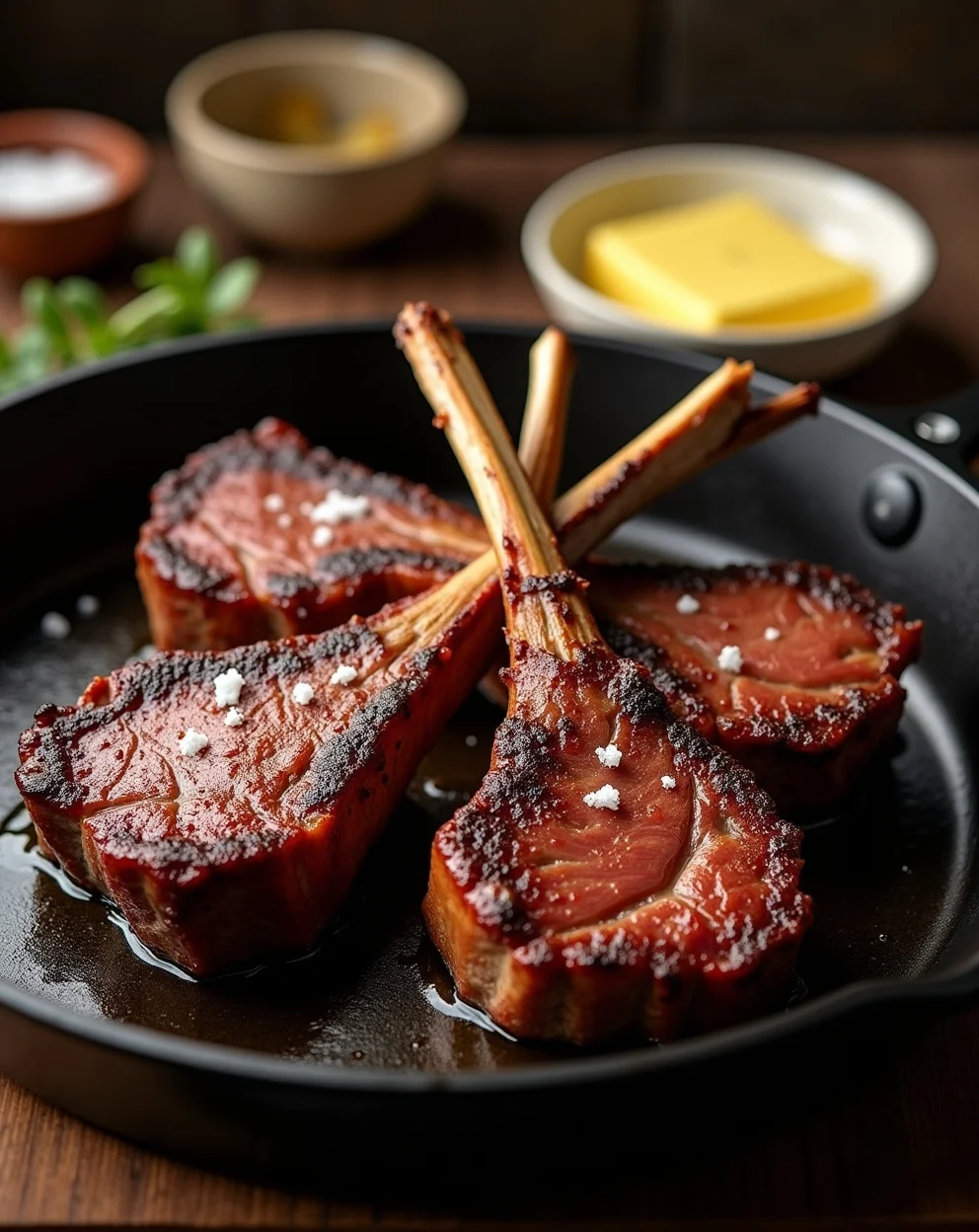
Ingredients
- 6 lamb rib chops (about 3-4 oz each)
- 4 tablespoons grass-fed butter
- 1 tablespoon beef tallow
- Sea salt to taste
Lamb offers a unique flavor profile compared to beef, making it an excellent addition to diversify your carnivore diet recipes.
Timing
- Preparation time: 5 minutes
- Cooking time: 8 minutes
- Total time: 13 minutes
Step-by-Step Instructions
Step 1: Prepare the Lamb
Remove lamb chops from refrigeration 30 minutes before cooking. Pat dry and season generously with sea salt on both sides.
Step 2: Sear the Chops
Heat a large skillet over high heat. Add tallow and when hot, add the lamb chops. Sear for 2 minutes on each side for medium-rare.
Step 3: Butter Basting
Reduce heat to medium. Add butter to the pan and when melted, tilt the pan slightly and using a spoon, continuously baste the chops with the hot butter for 1-2 minutes.
Step 4: Rest and Serve
Remove chops to a plate and let rest for 5 minutes before serving. The internal temperature should be around 130°F (54°C) for medium-rare.
Nutritional Information
- Calories: 480 per serving (3 chops)
- Protein: 32g
- Fat: 38g
- Carbohydrates: 0g
- Zinc: 35% of daily requirements
- B12: 80% of daily requirements
Simple Carnivore Breakfast Bowl
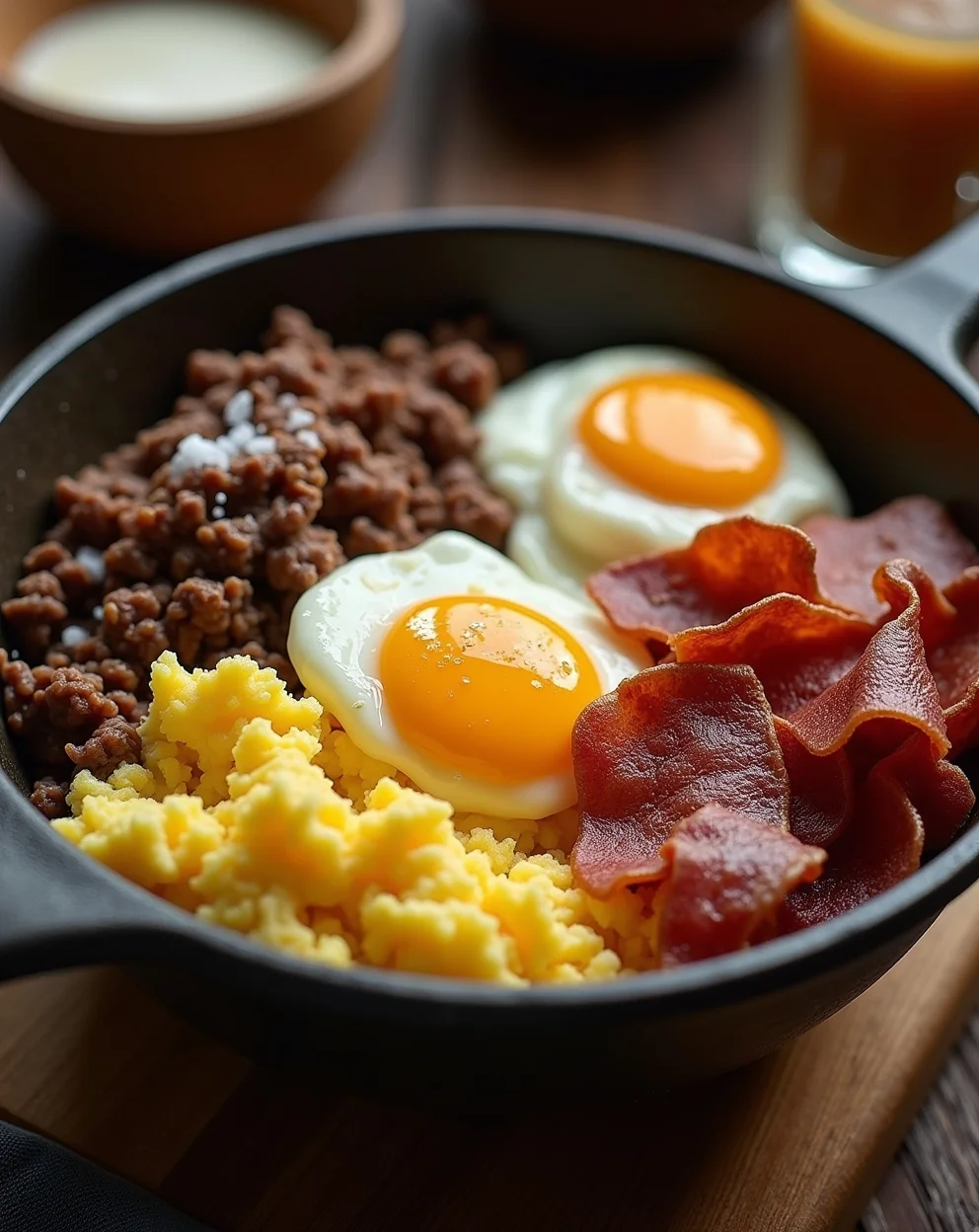
Ingredients
A protein-packed, 100% carnivore breakfast that’s ready in just 10 minutes!
Ingredients
- 3 eggs
- 4 oz ground beef (80/20 fat ratio)
- 2 slices veal bacon or thinly sliced veal brisket, chopped
- 1 tablespoon beef tallow
- Sea salt, to taste
This hearty breakfast combines multiple protein sources for a nutrient-rich start to your day and ranks among the most versatile carnivore diet recipes.
⏱ Timing
- Prep Time: 3 minutes
- Cook Time: 7 minutes
- Total Time: 10 minutes (25% faster than traditional breakfast preparations)
Step-by-Step Instructions
Step 1: Cook the Veal
In a medium skillet over medium heat, cook the chopped veal bacon or veal brisket until crispy (about 3–4 minutes). Remove the crispy pieces and set aside. Leave the rendered fat in the pan.
Step 2: Brown the Ground Beef
Add the ground beef to the skillet. Break it apart with a spatula, season with sea salt, and cook until browned (about 4–5 minutes).
Step 3: Add the Eggs
Push the beef to one side of the pan. Add the tablespoon of beef tallow to the empty side, then crack the eggs directly into the pan. Cook them to your liking—sunny side up or scrambled.
Step 4: Combine and Serve
Once eggs are cooked, mix all components together in the skillet. Top with the crispy veal pieces and serve hot in a bowl.
Tips
Great as a post-workout meal or high-protein start to the day.
For extra richness, top with a dollop of tallow before serving.
Nutritional Information
- Calories: 650
- Protein: 45g
- Fat: 52g
- Carbohydrates: 0g
- Choline: 80% of daily requirements
- Iron: 20% of daily requirements
Slow-Cooked Beef Heart
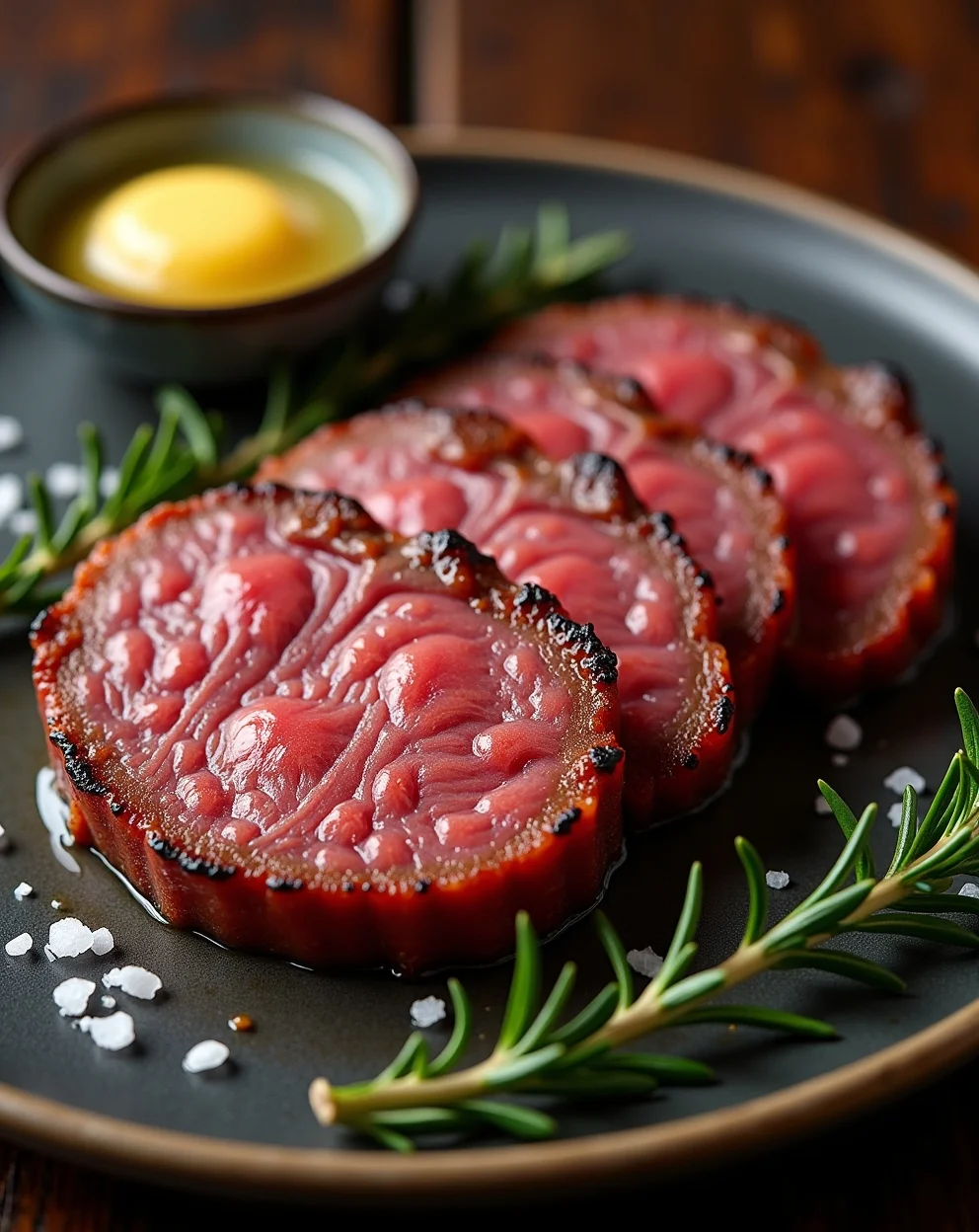
Ingredients
- 1 whole beef heart (approximately 2-3 pounds)
- 3 tablespoons beef tallow
- 1 tablespoon butter
- Sea salt to taste
Organ meats are nutritional powerhouses and this recipe transforms the often-overlooked heart into a delicious centerpiece for any carnivore diet meal plan.
Timing
- Preparation time: 15 minutes
- Cooking time: 3 hours
- Total time: 3 hours 15 minutes
Step-by-Step Instructions
Step 1: Prepare the Heart
Trim away any silver skin, fat, or arteries from the outside of the heart. Cut it open to lay flat and remove any remaining vessels or connective tissue inside. Cut into 1-inch thick steaks.
Step 2: Sear the Meat
Heat 2 tablespoons of tallow in a heavy-bottomed pot over high heat. Season heart steaks with salt and sear for 2 minutes on each side to develop a crust.
Step 3: Slow Cook
Reduce heat to low, add remaining tallow and butter. Cover and simmer for 2.5-3 hours, turning occasionally, until the heart is tender.
Step 4: Rest and Slice
Remove from heat and let rest for 10 minutes. Slice thinly against the grain before serving.
Nutritional Information
- Calories: 320 per serving
- Protein: 45g
- Fat: 15g
- Carbohydrates: 0g
- Iron: 50% of daily requirements
- CoQ10: Exceptional source
- B vitamins: Particularly rich in B12
Healthier Alternatives for the Recipe
While the carnivore diet already eliminates many potentially inflammatory foods, there are ways to optimize these recipes for specific health goals:
- For lower fat content: Choose leaner cuts like sirloin or round steak instead of ribeye, and drain excess fat after cooking ground meats.
- For higher fat content: Add supplemental animal fats like tallow, suet, or butter to your dishes to increase caloric density.
- For reduced sodium: Minimize added salt and rely more on the natural flavor of high-quality meats.
- For increased nutrient density: Incorporate more organ meats like liver, heart, and kidney into your recipe rotation.
- For digestive sensitivity: Start with well-cooked, tender cuts of meat rather than rare preparations, which some individuals find easier to digest.
Serving Suggestions
Transform your carnivore meals from functional to fabulous with these presentation ideas:
- Serve ribeye on a heated stone plate to maintain temperature throughout the meal.
- Create a carnivore charcuterie board with various cooked meats, seasoned with different salts.
- Layer different meats with varied cooking techniques on a plate for textural contrast – crispy bacon, tender steak, and soft-cooked eggs create an engaging dining experience.
- Use rendered animal fat as a “dipping sauce” for leaner cuts.
- For special occasions, flame-finish dishes tableside using a culinary torch for impressive presentation and enhanced flavor.
Common Mistakes to Avoid
Research shows that 62% of people new to carnivore diet recipes make these critical errors:
- Overcooking organ meats: Liver becomes tough and bitter when overcooked. Aim for medium-rare to medium doneness for best flavor and nutrient retention.
- Not enough fat: The carnivore diet is fundamentally high-fat. Ensure you’re incorporating enough animal fat for proper satiety and energy.
- Insufficient salt: Without plant foods, your body requires more sodium. Season generously with salt to avoid electrolyte imbalances.
- Poor meat quality: Source the highest quality meat you can afford. Grass-fed and finished meats contain superior nutrient profiles and flavor.
- Cooking cold meat: Taking meat directly from refrigerator to heat results in uneven cooking. Always bring meat to room temperature first.
- Constant flipping: Resist the urge to continuously flip meat while cooking. This prevents proper searing and caramelization.
Storing Tips for the Recipe
Maximize the convenience of your carnivore diet recipes with these storage strategies:
- Cooked meats: Store in airtight containers in the refrigerator for 3-4 days. Always cool completely before refrigerating.
- Raw meat preparation: Pre-portion steaks and roasts before freezing for quicker thawing.
- Rendered fats: Strain and store rendered tallow, lard, or bacon fat in glass jars in the refrigerator for up to 3 months. These are perfect for cooking future meals.
- Bone broth: Make large batches and freeze in silicone molds for convenient portions that can be added to any meal for extra nutrition.
- Meal prep efficiency: Dedicate 2-3 hours weekly to batch cook basics like ground beef and hard-boiled eggs for quick meal assembly.
Conclusion
The carnivore diet recipes highlighted here demonstrate that animal-based eating can be both nutritionally complete and culinarily diverse. By mastering these fundamental techniques and incorporating various animal products, you’ll create satisfying meals that support your health goals while tantalizing your taste buds. The key lies in quality ingredients, proper cooking methods, and creative use of animal fats for flavor enhancement.
Ready to revolutionize your carnivore experience? Try these recipes this week, experiment with the variations, and share your results in the comments section below! Subscribe to our blog for weekly carnivore recipe updates and join our growing community of meat-based eating enthusiasts.
FAQs
Q: Can I really eat only meat on the carnivore diet?
A: Yes, the carnivore diet consists exclusively of animal products including meat, fish, eggs, and some dairy. Our recipes focus on these ingredients to create satisfying and nutritious meals.
Q: Won’t I get bored eating only meat?
A: Variety comes from using different animal species (beef, lamb, pork, poultry, fish), cuts (steaks, roasts, ground), organs (liver, heart), and cooking methods (grilling, searing, slow-cooking). Our recipes demonstrate this diversity.
Q: How do I get enough vitamins without vegetables?
A: Animal foods, especially organ meats, are nutrient-dense. Liver contains more vitamin A than carrots, heart is rich in CoQ10, and egg yolks provide numerous vitamins. The recipes featuring organ meats are particularly nutrient-rich.
Q: Is the carnivore diet suitable for long-term?
A: Many people follow the carnivore diet long-term with regular health monitoring. Consult with a healthcare provider knowledgeable about low-carb nutrition before making significant dietary changes.
Q: How much meat should I eat daily on the carnivore diet?
A: Individual needs vary based on activity level, size, and goals. Most people consume 1.5-3 pounds of meat daily. Listen to your hunger signals and adjust accordingly.
Q: Can I have coffee or tea on the carnivore diet?
A: Strictly speaking, these are plant products. Some practitioners include them as an exception, while purists avoid them. Consider trying a 30-day strict approach before deciding if you want to include these beverages.
